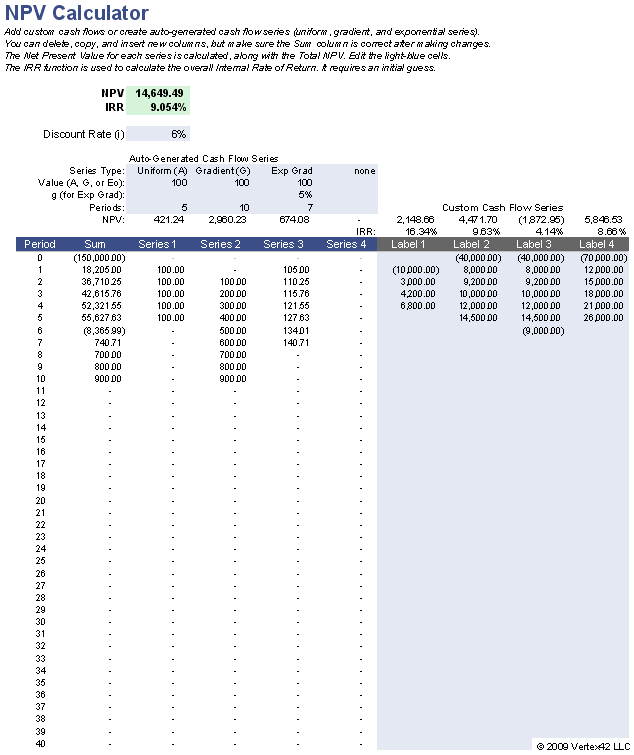Contents:


The definition of a direct financing lease under ASC 842 differs from its definition under ASC 840. Classification as a direct financing under ASC 840 is only possible when the lease does not give rise to profit or loss to the lessor at lease inception, i.e., the cost and fair value of the leased asset must be equal. An example of a situation when a lease may qualify as a direct financing lease is when a bank acquires a building from a third party and leases it under a capital lease to the lessee. In this case, the cost and fair value of the real estate would likely be the same given the purchase and concurrent sales-type lease. This represents only a change in timing of tax-related cash flows because the lost leveraged lease income will be re-recognized over the remaining lease term.
Wall Street’s Big Bet on Rewiring America — The American Prospect
Wall Street’s Big Bet on Rewiring America.
Posted: Mon, 23 Jan 2023 08:00:00 GMT [source]
For example, assume that the IRS disallows a portion of a lessor’s depreciation deductions, and the lessor enters into a settlement that reflects payment of the related back taxes to the IRS. The tax basis to the lessor of the leased property would be increased accordingly, and the lessor would enjoy the benefit of the additional tax deductions later in the lease term. The total net income from the lease would not change; however, the rate of return inherent in the leveraged lease would be lower. Depending on the type of loan agreement, the lessor must make regular payments to the lender. Usually, the lessor collects their payment from the lessee and passes it to the lender. If the lessee fails to compensate the lessor, the lender can repossess the asset.
How does a Leverage Lease work?
Sale-leaseback is a situation the place a company sells a big asset, normally a hard and fast asset corresponding to a constructing or giant capital equipment, after which leases it again from the purchaser. Sale lease-back preparations improve liquidity because they present a big cash inflow after the sale and small nominal cash outflow for reserving a rental expense as an alternative of a capital buy. This reduces the money outflow degree tremendously so the liquidity ratios are also affected.
- In business accounting, leveraged leases are referred to as capital leases.
- Undervaluation of the capital base may significantly increase the leverage of investment restrictions.
- In the UK, some operating lease expenses can be capitalized on the company’s balance sheet; in the US, operating lease expenses are generally reported as operating expenses, similarly to fuel or wages.
The tax burden is somewhat less in case of lessor borrowing funds from outside. When a company decides to buy the high-value asset to increase its productivity and returns they may opt for this type of financial arrangement. This technique is very much time saving also because the assets are purchased when they are required and the business operations are continued without any delay caused due to fund deficiency. Accounting standards require a business to differentiate and account for leased assets differently depending on whether the lease is an operating lease or leveraged/capital lease.
Operating Lease: How It Works and Differs From a Finance Lease
Lease PaymentsLease payments are the payments where the lessee under the lease agreement has to pay monthly fixed rental for using the asset to the lessor. The ownership of such an asset is generally taken back by the owner after the lease term expiration. In this ratio, operating leases are capitalized and equity includes both common and preferred shares. Instead of using long-term debt, an analyst may decide to use total debt to measure the debt used in a firm’s capital structure. The formula, in this case, would include minority interest and preferred shares in the denominator.
Commonly used by credit agencies, this ratio determines the probability of defaulting on issued debt. Since oil and gas companies typically have a lot of debt on their balance sheets, this ratio is useful in determining how many years of EBITDA would be required to pay back all the debt. Typically, it can be alarming if the ratio is over 3, but this can vary depending on the industry.

A lessor is a person or other entity that owns an asset but which is leased under an agreement to the lessee. The present value of the lease payments is greater than 90% of the asset’s market value. Leveraged leases allow an entity to rent an asset for a specified amount of time using borrowed funds.
Difference Between Leveraged Lease and the Operating Lease
An option is available to the company at the end of the lease period to buy the asset. The funds are saved for other business activities, which otherwise would have been blocked in the assets. A company can enjoy the right to use high-cost assets without investing in them, which otherwise it could not have afforded. The frequency of such payment can be monthly, quarterly, or yearly depending on the contract. Investopedia requires writers to use primary sources to support their work.
Some U.S. banks hold an aircraft «in trust» to protect the privacy of the true «owners» of the aircraft or to «secure U.S. registration of aircraft for non-U.S. citizen corporations and individuals». At closing, the loan documentation is executed and then funds and title are transferred. As a end result, SLB transactions have misplaced some of their enchantment for seller-lessees, however nevertheless stay attractive for other reasons.
Typically, if the unique proprietor have been to purchase back the asset, it will happen on the end of the tax yr, in case any party had been to be audited by the IRS. Historically, working leases have enabled American corporations to keep billions of dollars of property and liabilities from being recorded on their stability sheets. Contrasted with conventional debt financing, the sale-leaseback often brings one hundred pc of the asset’s capital again to the corporation, the place conventional financing provides a proportion of the asset’s value. Sale-leasebacks also provide an agreed upon annual rent for the asset, somewhat than an amortized or single lump payment. These lease funds may be structured in additional flexible methods; for example, low rent payments in the course of the first five years make it more snug for corporations from a balance sheet standpoint.
Accounting in the books of Lessor in case of Operating Lease
When such a transaction occurs, the first accounting step is to determine whether the transaction was at fair value. Once the lessee pays off the lease, or the lessor pays off the loan, the lessor gets to own the asset. The lessor also doesn’t take part in the payment process as it usually involves payments from the lessee to the lender. Usually, the lessor also contributes to the total amount required to acquire the asset. The term may also refer to a lease agreement wherein the lessor, by borrowing funds from a lending institution, finances the purchase of the asset being leased.
Individuals or business entities may encounter the differences in an operating lease vs. a leveraged/capital lease. In general, an operating lease does not include any options for buying the asset being rented. Common types of operating lease agreements include apartment leases and building leases. Leverage leases can be more complex than a basic operating lease because leverage is involved. The structure of the leveraged lease terms will depend on the lessor and their financing relationships. The lessor may also be the financing institution who provides the loan in which case they approve the loan for the borrower.
The present value of minimum lease payments is more than 90% of the fair value of the leased asset. Accordingly, the lessor would recalculate the leveraged lease, based on the cash flows implied by scenario E. The second situation is when only the timing of the expected settlement changes, for example, when the lessor originally expected a 70/30 settlement to occur in a one period, but then changed the expected settlement date to one year later. Some lessors may be anticipating settling their tax exposures over a period of time.
Mechanically, they are equivalent to 60% of the amount in the table relating to the original leveraged lease calculation plus 40% of the amount in the table relating to the deductions originally asserted by the taxing authorities. In the first step of the recognition and measurement process under the guidance of ASC 740, the lessor would conclude that the uncertainty only relates to the timing of the deductions and income for tax purposes. Accordingly, the recognition threshold would be reached and the lessor would proceeds to step 2 to determine the appropriate measurement.
The owner would make rental payments to an equipment rental service and account for it as an asset and a liability on their balance sheet because they’ll likely need it for more than one year. The business that leases the asset is called the lessee, and the business that loans it under a lease is called the lessor. The responsibilities of each party in the agreement are spelled out in the lease contract and documents, but generally, the lessee must maintain the asset to ensure it remains in operational condition, less any normal wear and tear.
Accounting for Leases under the New Standard, Part 2 — The CPA Journal
Accounting for Leases under the New Standard, Part 2.
Posted: Wed, 27 Sep 2017 07:00:00 GMT [source]
Because ASC 842 requires lessees to recognize most leases (excluding quick-time period leases) on their stability sheets, SLB transactions now not provide seller-lessees with off–steadiness sheet financing. In an SLB transaction, a vendor-lessee sells one of its belongings to a buyer-lessor in change for consideration and makes periodic rental funds to the customer-lessor in exchange for retaining the use of the asset. That means the lessor is not liable for repayment of loan installments in case of a default, and the lender can recover the installments only from the lease rentals paid by the lessee. The leveraged lease is generally used when any company wants to purchase some high-value assets. In the leveraged lease, the finance provider which is lender is without recourse to the lessor. In leveraged leasing, the lender has the right to the asset whereas in leveraged financing the right is kept with the lessor only.
For example, they might expect to settle with the IRS for certain open years prior to settling for other open years. If so, the projected leveraged lease meaning flows should reflect the multiple settlements as they are expected to occur. When a lease of more than 12 months is initiated, the lessee must account for it as a lease liability and an asset right-of-use on the balance sheet. The intent behind the change is to reduce the ability of organizations to manipulate the balance sheet and create a more faithful representation of a business’s rights and obligations. Useful Life Of The AssetUseful life is the estimated time period for which the asset is expected to be functional and can be put to use for the company’s core operations.
The small portion of the fund is arranged by the lessor and the majority portion of the fund which is required to obtain the asset is borrowed by the lender. Our experts suggest the best funds and you can get high returns by investing directly or through SIP. CAs, experts and businesses can get GST ready with Clear GST software & certification course. Our GST Software helps CAs, tax experts & business to manage returns & invoices in an easy manner. Our Goods & Services Tax course includes tutorial videos, guides and expert assistance to help you in mastering Goods and Services Tax.
An arrangement ensures the lessee with the right to use an asset without paying the purchase price for the same. The arrangement ensures periodic receipt of lease rentals as against the right to use the asset for the lessor. LeasebackLeaseback refers to a financial arrangement whereby the company that has sold the asset can take it back on lease from the buyer. Thus, the sale-leaseback facilitates the former owner to utilize the asset while its ownership lies with the purchaser. Total-debt-to-total-assets is a leverage ratio that shows the total amount of debt a company has relative to its assets. Exploration costs are typically found in the financial statements as exploration, abandonment, and dry hole costs.
Clear can also help you in getting your business registered for Goods & Services Tax Law. Any other lease other than finance lease is considered as an Operating Lease. Carla Tardi is a technical editor and digital content producer with 25+ years of experience at top-tier investment banks and money-management firms.